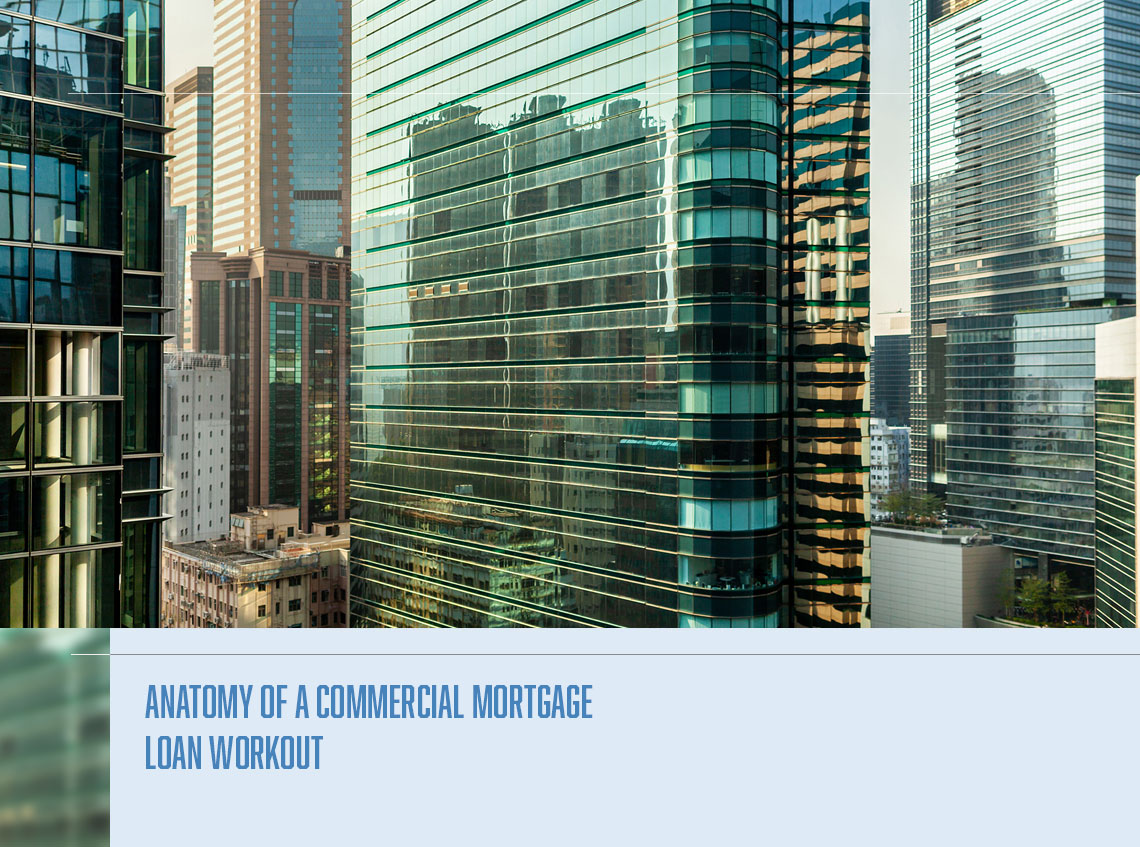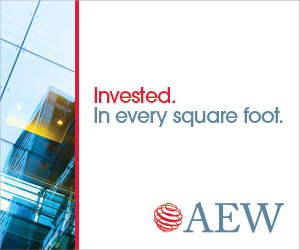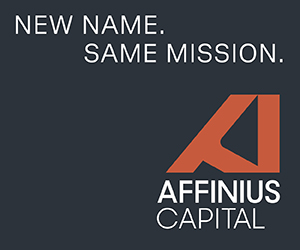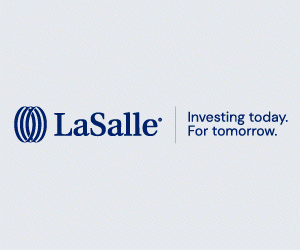PREA Quarterly Feature - Summer 2023

 Arren Goldman
Arren GoldmanSeyfarth Shaw LLP
 Joel Rubin
Joel RubinSeyfarth Shaw LLP
Each economic downturn impacts commercial real estate in different ways. As the current downturn continues to play out, many find themselves in unfamiliar territory in terms of how to approach a potential workout of a commercial mortgage loan. Although each commercial mortgage loan is different, certain fundamental concepts, principles, and approaches tend to apply universally to distressed-loan transactions during each economic slowdown. This article highlights some of those fundamental concepts. We also detail a few potentially unique approaches to loan workouts in the current downturn.1
Early Stage Considerations
The early stages of a loan workout are crucial in several respects. Lenders, loan servicers, borrowers, and guarantors all must think ahead, stay ahead of the curve, and otherwise prepare for various contingencies while protecting from a legal standpoint. Understanding the stature of the parties is equally important. Is the borrower a developer; a local, regional, or national property owner; a fund or an institution; and in the latter cases, is an investment advisor or another third-party “fiduciary” involved? Is the property manager the owner or a third-party local, regional, or national manager? Is the lender a bank (national, regional, or local), life insurance company, hard-money lender, CMBS lender, or private equity lender? Each has its own particularities that will influence how the asset is underwritten and the willingness to be flexible when addressing the challenges of a distressed loan in challenging times. Understanding the motivations of each party is very important in the loan workout context.
Default Analysis
An important first step is to analyze the nature of the current and anticipated defaults. Are the defaults from poor management, economic conditions outside the control of the sponsor, or a combination of both? Are the defaults significant, such as a payment default, or minor, such as an inconsequential covenant default? Lenders and servicers may face challenges exercising remedies in certain jurisdictions where the sole basis for doing so is a “minor” default. Analyzing these and other factors will help both sides formulate a plan or, better yet, several alternative plans for moving forward.
Communications and Pre-Negotiation Agreements
A sponsor should keep open the lines of communication with the lender or servicer while keeping in mind possible peculiarities. This includes approaching the lender/servicer early with a specific, detailed plan that could work for both sides, rather than simply pointing out the problems and looking to the lender or servicer to offer solutions. That said, both sides must be extremely careful with what is communicated, verbally and in writing, as certain statements could be used later against them in court proceedings.2
Early in communications, all parties to a loan workout transaction should seriously consider entering into a pre-negotiation agreement. Among other things, a prenegotiation agreement allows parties to have open and free discussions without any of the communications—written or verbal—being used against a party in litigation should negotiations fail. Though not always customary, with a prenegotiation agreement potentially being the first written agreement among the parties since the closing of the loan, a lender or servicer may seek, in such an agreement, to obtain from the sponsor releases of claims, reaffirmations of obligations, and/or acknowledgments regarding the defaults. And even if a sponsor is not prepared to provide these in a pre-negotiation agreement, the sponsor should expect the lender or servicer to seek these at a later point in the process. The sponsor, on the other hand, may attempt to use a pre-negotiation agreement as an opportunity to induce a lender or servicer to agree to a standstill in terms of exercising its remedies. A pre-negotiation agreement is only a first step, and more will come as the workout negotiations move forward.
File Reviews and Due Diligence
Concurrent with entering into a pre-negotiation agreement, it is prudent for each party to review its loan files. Each party needs to fully understand what the loan documents provide, particularly with respect to defaults, recourse,3 and remedies and, especially in the case of the sponsor, what guaranties, if any, have been executed. Additionally, both sides need to confirm that the loan documentation is complete, is fully executed, and does not contain crucial errors in one party’s favor. As noted, all loan workouts require the parties to think several steps ahead, which includes analyzing how a lender’s or servicer’s attempts at enforcement potentially would play out. A thorough file review is a crucial part of this analysis.
While the lender or servicer is reviewing its files, it often begins the process of gathering additional information regarding the sponsor, the property manager, the property and its occupants, and the state of title. This may include obtaining an updated appraisal or a broker’s statement of value, a capital improvement analysis, a property condition report, an updated environmental report, a title search, searches against the individuals and entities obligated under the loan documents, as well as requests for additional information regarding cash flows, carrying costs, the tenants, and/or prospective tenants. A sponsor should not be surprised by these types of requests; a prudent lender or servicer is likely to begin this analysis early in the process with an eye toward potentially owning the property in the near future or forcing a sale.
Default Notices
Once a mortgage loan has defaulted, a sponsor should anticipate receiving a default notice.4 In this notice, a lender or servicer customarily will reserve all its rights, including with respect to future defaults as well as defaults about which it has no knowledge.5 A default may trigger certain lender rights, some of which may require notice to the sponsor, such as the ability to implement cash management or to cease disbursements from reserves, or may trigger prohibitions on a sponsor, such as a prohibition against making further distributions. A lender or servicer may elect to notify the sponsor, in the default notice, of its exercise of these rights. A sponsor should also keep in mind, even before the actual default has occurred, other consequences of a default, such as the implementation of a default interest rate.
Additionally, in a default notice, a lender or servicer, traditionally, will begin setting the stage for how to treat actions it takes in the future. For example, a default notice is likely to contain statements about how a lender or servicer can accept partial payments without waiving any of its rights and how it does not create a course of conduct by taking a particular action, such as advancing funds, waiving a particular loan document requirement, or otherwise granting some form of short-term relief. A sponsor often uses claims of a “waiver” or a “course of conduct” as a defense to a lender’s or servicer’s enforcement. Accordingly, throughout the workout process, a lender and servicer must guard against these and other defenses, including defenses rooted in lender liability claims based on how the lender or servicer has behaved or actions it has taken. On the flip side, a sponsor must be aware of these potential defenses while preserving any rights it may have against the lender and/or servicer.
After the Initial Stages
Assuming the parties to a loan transaction are willing to continue to work together, the next step is to enter into documentation that likely will take one of two forms: a loan modification or a forbearance arrangement.
A loan modification agreement may be used to prevent a default from occurring in the first instance (for example, by modifying a provision in a loan document the parties know will not be satisfied in the near future, such as an impending breach of a financial covenant), or it may be used as a tool by which a lender waives certain defaults that have already taken place, in either case, in exchange for certain concessions.6 These concessions may include additional collateral, a principal paydown, enhanced financial reporting requirements, the implementation of cash management, tighter controls on leasing, a deed in lieu deposited in escrow, a confession of judgment,7 and/or enhanced financial or property-level covenants. It is important that sponsors recognize early in the process that lenders and servicers may be willing to modify and/or extend a loan, but they will expect something in return for doing so, potentially including a loan modification fee.
A forbearance agreement, in contrast, is used when there are one or more defaults and the parties agree that the defaults will remain in place while the lender agrees to forbear from exercising its remedies for a specified period of time (called the forbearance period), which will vary from transaction to transaction.8 A forbearance agreement may contain loan modifications, too. The forbearance agreement will delineate the end of the forbearance period (often the earlier to occur of a certain event, such as an additional default, or an outside date). If the forbearance period ends because of an entirely new default, the lender will have the ability to immediately exercise remedies. Some forbearance agreements provide that if certain conditions, such as the payment of deferred interest and/or principal payments, are satisfied before or by the conclusion of the forbearance period, the loan will be considered to no longer be in default.
If a loan workout or restructuring is being discussed, all the parties must discuss, as early as possible, the costs (including legal fees), timing, and diligence associated with any loan modification or forbearance arrangement. Frequently, lenders will require diligence similar to that obtained at origination (such as UCC, lien, judgment, bankruptcy and litigation searches, legal opinion letters, updated title, and/or third-party reports). Timing, costs (including timing and amounts of any deposits therefor), and requirements (including, for example, internal credit approval) should be discussed early in the process to prevent last-minute arguments or surprises.
Later Stage Considerations
Once it becomes apparent that a loan cannot achieve non-defaulted status (whether this is early in the process or after a forbearance period has expired and whether this is because cash flows are insufficient or because another uncurable default has occurred), a lender will begin exercising remedies. Several considerations may impact a lender’s or servicer’s approach to exercising remedies.
One such consideration is the level of cooperation the lender or servicer can expect from the sponsor. A sponsor’s level of cooperation may be driven by whether the loan is fully recourse, partially recourse, or nonrecourse and whether there is a carry guaranty and for how long. Indeed, a sponsor that has executed a nonrecourse guaranty (i.e., a loan for which the sponsor is obligated for only “bad acts”) or has no guaranty and has acted in good faith and simply cannot overcome economic conditions may be inclined to “hand the keys over” and agree to a deed in lieu of foreclosure while considering if and what party will pay local transfer taxes. Additionally, other considerations, such as reputational factors, may play a role in each party’s approach during the later stages of a workout (e.g., a deed in lieu may help a sponsor avoid negative publicity and/or otherwise help it maintain a good relationship with its lenders; although if dealing with a loan servicer, this consideration may not be a factor). As the lender or servicer moves to exercise remedies, the parties must also consider the need for additional capital to fund tenant improvements and leasing commissions as well as for capital and other improvements to the building. Additionally, certain lenders and servicers may not be equipped to take over the management of a property. These factors could motivate a sponsor to cooperate, or on the flip side, they could motivate a lender to approach the workout in a different way, such as agreeing to a sale by the borrower prior to commencing a foreclosure action or agreeing to a discounted payoff.
Another factor that both sides must consider is whether the jurisdiction in which remedies are being exercised provides for judicial, quasi-judicial, or nonjudicial foreclosures and how long foreclosures take in such a jurisdiction.9 If the property is located in a jurisdiction where a judicial foreclosure (i.e., through the courts only) is the only option and the process takes months or even years to complete, a lender or servicer may be incentivized to find a quicker, more consensual solution. Similarly, a sponsor may be so incentivized if, for example, the loan will continue to accrue default interest during the proceedings or if it has certain ongoing obligations with respect to the property, including to tenants at the property.
Opportunities for Unique Restructuring Approaches In the Current Downturn and Other Tools
The current economic slowdown presents some unique considerations with respect to loan workouts. In the rising-interest-rate environment, some below-market, fixed-interest-rate loans are secured by properties that appear to have market values substantially less than the current principal loan balances. These situations may present potentially unique solutions for lenders/servicers and sponsors alike, such as having a buyer assume the fixed-rate loan. Such an assumption is likely to require loan modifications and, perhaps, a write-down or, to the lender’s/servicer’s advantage, a principal paydown or other concessions from the buyer/assumptor, but it remains a potential workout strategy that may have to be considered.
Many workout strategies are available to each party, but deciding which path to take can be complicated. Does a lender agree to a discounted payoff from the current sponsor, accept a deed in lieu, or grant the sponsor time to attempt to sell the property even though new-acquisition financing may be costly and difficult to secure? And what about the need to invest additional capital and otherwise maintain the property? Is there enough of a reason to invest new money when the previously invested capital has been lost? Does bifurcating the loan to include a “hope” note make sense in this environment compared to in prior down markets?
Potential workout strategies are and will be challenging and, as suggested above, knowing who the players are and their potential motivations takes on even more importance. It is equally important to be keenly aware of certain time-tested loan workout approaches, principles, and techniques as well as potential pitfalls. 
1. This article explores some basic concepts for commercial mortgage loan workouts. Obviously, there are different considerations for different types of loans and loan structures, such as CMBS loans, construction loans, and/or mezzanine loans, which are not detailed in this article.
2. See Arren Goldman and Jonathan Wolfert, “Can and Will Be Used Against You: The Importance of Pre-Negotiation Agreements for Troubled Commercial Loans,” Real Estate Finance Journal, Spring, 2017.
3. Some loans provide for full or partial recourse against a guarantor (i.e., the guarantor is only personally obligated for the repayment of all or a portion of the principal and interest and potentially other costs and expenses), and other loans are considered non-recourse (i.e., the guarantor is personally obligated for the lender’s losses because of certain bad acts by specified parties but could be obligated for the full amount of the loan if certain events, such as a bankruptcy, occur). And yet other loans may provide that the lender’s sole recourse is against the property.
4. See Arren Goldman, “Key Considerations for Default Notices/Reservation of Rights Letters for Defaulted Commercial Mortgage Loans,” Legal Update, Seyfarth Shaw LLP, March 19, 2020.
5. A “default” may mean a payment default, but it could also mean any other default or claim of default under the loan documents, such as the failure to satisfy a financial covenant or the failure to deliver a financial report.
6. See Arren Goldman, “Commercial Mortgage Loan Modifications: Looking Beyond the Basic Terms,” Real Estate Finance Journal, Spring, 2019, and Arren Goldman, “Key Considerations for Commercial Mortgage Loan Modifications,” Legal Update, Seyfarth Shaw LLP, March 20, 2020.
7. In some jurisdictions, a creditor can obtain an agreement signed by a debtor that allows the creditor to obtain a judgment against the debtor without a formal court proceeding.
8. See Arren Goldman, William Hanlon, and Raymond Tran, “Forbearance Principles and Practice,” Legal Update, Seyfarth Shaw LLP, March 19, 2020.
9. Bankruptcy considerations often play a role throughout the loan workout process, but are beyond the purview of this article.
Arren Goldman and Joel Rubin are Partners at Seyfarth Shaw LLP.
This article has been prepared solely for informational purposes and is not to be construed as investment advice or an offer or a solicitation for the purchase or sale of any financial instrument, property, or investment. It is not intended to provide, and should not be relied on for, tax, legal, or accounting advice. The information contained herein reflects the views of the author(s) at the time the article was prepared and will not be updated or otherwise revised to reflect information that subsequently becomes available or circumstances existing or changes occurring after the date the article was prepared.


 About PREA
About PREA

















